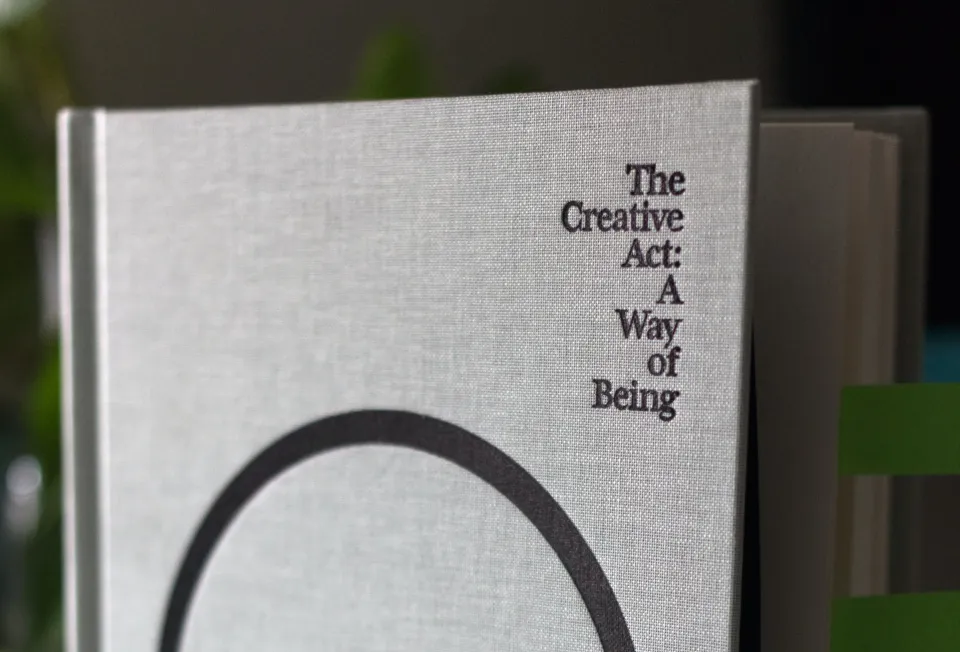Rick Rubin’s “The Creative Act” is a Toolbox Packed with Powerful Creative Lessons

Rick Rubin’s The Creative Act: A Way of Being is powerful.
A collection of ideas and lessons developed by Rubin provides readers with direction about harnessing and understanding their creativity.
However, The Creative Act is far from being a traditional prescriptive, how-to manual to enhancing one’s creativity; instead, it is a collection of 78 brief chapters designed to inspire and build confidence in creative individuals so they’re able to build momentum, overcome doubt, and push back against creative resistance.
A key reason for the book’s power is its design; by separating the text into 78 passages, Rubin created an accessible, practical tool to consult for inspiration, ideas, and guidance at any time. If you’re creative (and we all are, according to Rubin), this is a book you’ll want sitting on your desk or tucked away in your backpack at all times.
Each chapter contains explicit, high-level guidance enabling creatives to see themselves in Rubin’s lessons. Moreover, most of his advice may be implemented and tested immediately, bringing instant value to readers; for example, in his chapter Breaking the Sameness, Rubin sets out a series of exercises to overcome creative blocks and “access new ways of performance” and thinking. While these exercises are somewhat prescriptive, much of his teaching is not. Instead, he sets out ideas for contemplation, encouraging readers to think differently about themselves and their creative work. For example:
If you have an idea you’re excited about and you don’t bring it to life, it’s not uncommon for the idea to find its voice through another maker. This isn’t because the other artist stole your idea, but because the idea’s time has come.
Setting aside the philosophical questions this quote raises, this passage suggests it’s the artist’s responsibility to bring their ideas to life. Indeed, it’s a creative’s job to draw on their ideas and share them with the world, no matter how odd. Simplistic, yet motivational.
Throughout his treatise, Rubin employs a philosophical writing style to highlight the mystery and value of creative work, which excited me to explore this area of my life again. Middle Eastern philosophy pervades much of his advice, and the creative act is treated as a spiritual practice. Some of his discussions come off as slightly pretentious — statements like “we are dealing in a magic realm” — are difficult to grasp, but they always make you think.
Like the techniques used by cognitive behavioral therapists, many of Rubin’s lessons focus on identifying thinking traps in which creatives may find themselves. At times, Rubin dons the hat of a psychotherapist, spinning phrases and advice like the following:
It’s worth noting the distinction between doubting the work and doubting yourself. An example of doubting the work would be “I don’t know if my song is as good as it can be.” Doubting yourself might sound like, “I can’t write a good song.” These statements are worlds apart, both in accuracy and in impact on the nervous system. Doubting yourself can lead to a sense of hopelessness, of not being inherently fit to take on the task at hand.
Many creatives struggle with the question of whether their work has any value and if there’s any point in creating at all. This line of questioning by the artist is a product of our hypercompetitive, capitalist society, which has trained us that for an action to be worthwhile, it must generally have some financial or economic benefit to others or the market. This is nonsense, of course, and Rubin addresses this type of thinking and exposes the fallacy behind this incorrect belief. Rubin successfully defends the creative act against this economic line of attack, helping to affirm the creative process and its outputs as intrinsically valuable.
Additionally, throughout the book, Rubin poses philosophical questions and describes situations he’s found himself in, challenging readers to question their assumptions about their creative lives, work, and overall purpose. As he states early on, “Our work embodies a higher purpose — whether we know it or not, we’re a conduit for the universe. Material is allowed through us.”
The bulk of the book is concerned with pronouncements about the nature of creative life, strategies for creating and viewing art, his experiences with writers and musicians, and how to approach creative work compassionately. There are pearls of wisdom scattered through the book regarding the creative process of selecting what he calls “seeds” and how to nurture those seeds best so that they grow into works of art. In this area, Rubin is masterful and speaks with authority. That said, Rubin’s tone is calm, humble, and encouraging with virtually no hint of arrogance — he has some thoughts to quietly share with those who may be interested in listening. Some people have argued his approach is clinical (i.e., efficient, cold, detached), but I did not find this at all.
If you’re open and receptive to his ideas, you may experience the effect, much like I did, of having a self-imposed weight removed from your shoulders — and a general lightness return to your creative endeavors. And you don’t have to be a writer, musician, or designer to gain something of value from this book — if you create something, anything, you will learn to be a more effective creator through Rubin’s wisdom and philosophy — just don’t let it gather dust on a bookshelf, this book was designed to be used.
